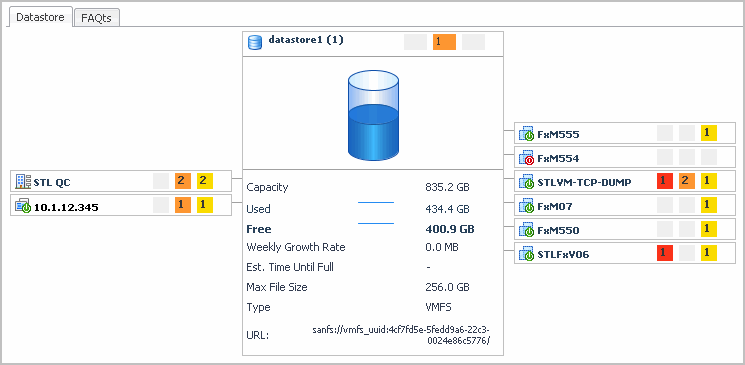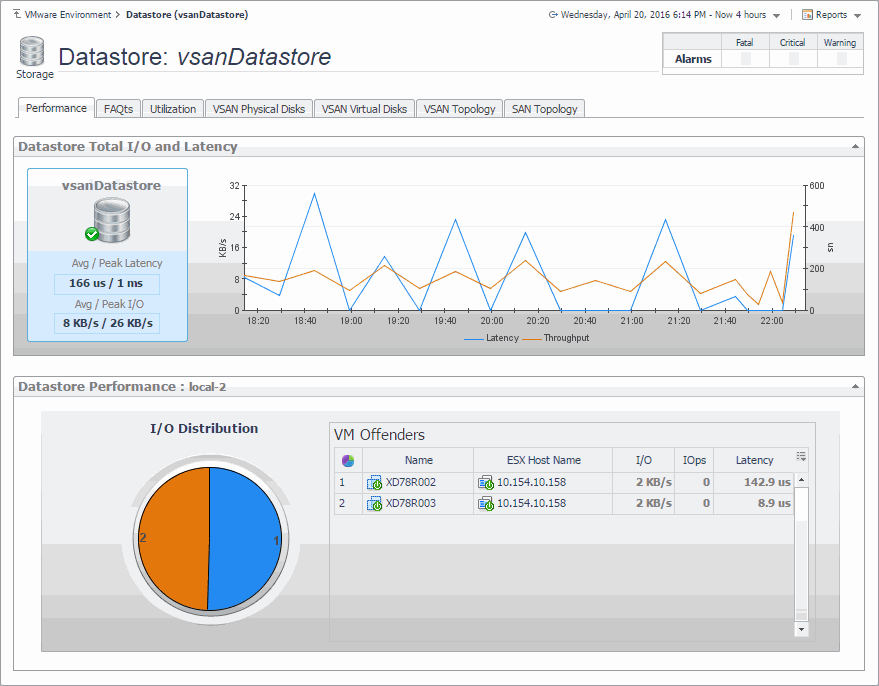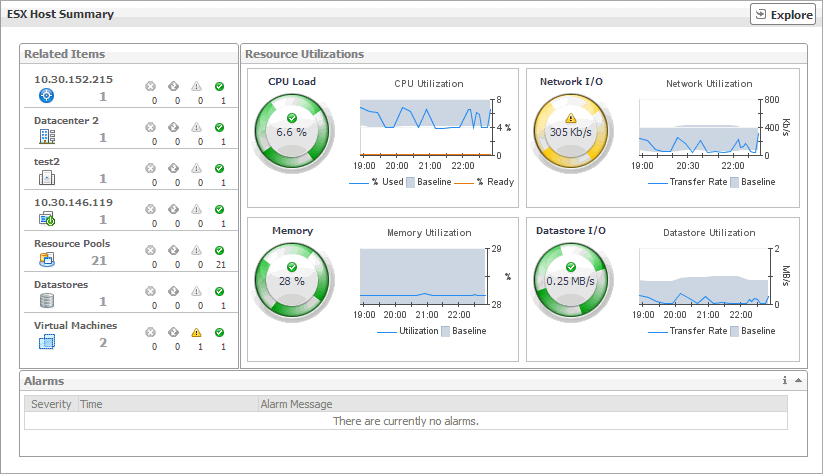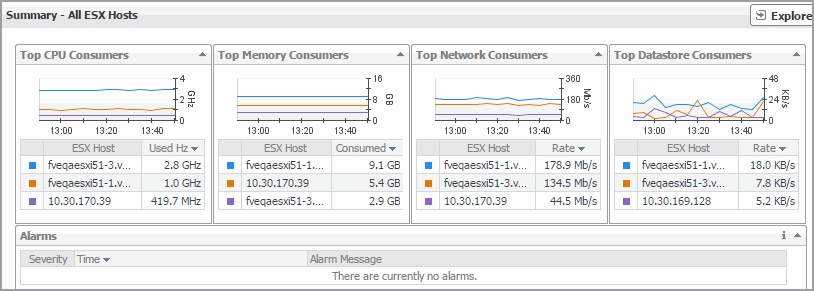Datastore tab
The Datastore tab shows the overall resource utilization and the amounts of system resource consumption for a physical datastore, the related components, and their alarm state.

The Datastore tab appears in the display area.
This view is made up of the following embedded views:
Datastore view
The Datastore view shows the performance and utilization metrics for a selected datastore.

|
|
NOTE: The VSAN Physical Disks, VSAN Virtual Disks, and VSAN Topology tabs appear in this view only if a VSAN Datastore is selected. For more information about VSAN datastores, see VSAN datastores . |
The Datastore view appears in the display area.
This view is made up of the following embedded views:
ESX Host Summary view
The ESX Host Summary view shows the overall resource utilization and the amounts of system resource consumption for a physical ESX host.

The ESX Host Summary view appears on the right.
This view is made up of the following embedded views:
|
|
Shows the numbers and states of the selected ESX host and other components associated with the host. |
|
|
|
• |
Datacenter. The name of the datacenter associated with the selected ESX host. | |
|
|
|
• |
Datastores. The number of datastores that are associated with the selected ESX host, followed by the related alarm counts. | |
|
|
|
• |
ESX Hosts. The name of the selected host, followed by the related alarm counts. | |
|
|
|
• |
Resource Pools. The number of resource pools that are associated with the selected ESX host, followed by the related alarm counts. | |
|
|
|
• |
Virtual Center. The name of the virtual center associated with the selected ESX host, followed by the related alarm counts. | |
|
|
|
• |
Virtual Machines. The number of virtual machines that are associated with the selected ESX host, followed by the related alarm counts. | |
|
|
Drill down on: |
|
|
|
• |
Alarm count. Displays the Alarms dialog box that shows a list of all related alarms. For each alarm entry, it shows its severity, the time at which it was triggered, the rule name that triggered the alarm, and the alarm message. |
|
|
|
|
• |
Datacenter. Displays the Datacenters Inventory dwell, showing the name and state of the datacenter associated with the selected ESX host. |
|
|
|
|
• |
Datastores. Displays the Datastores Inventory dwell, showing the names and states of all datastores that are associated with the selected ESX host. |
|
|
|
|
• |
ESX Host. Displays the ESX Hosts Inventory dwell, showing the name and state of the selected ESX host. |
|
|
|
|
• |
Resource Pools. Displays the Resource Pools Inventory dwell, showing the names and states of all resource pools that are associated with the selected ESX host. |
|
|
|
|
• |
Virtual Center. Displays the Virtual Centers Inventory dwell, showing the name and state of the virtual center associated with the selected ESX host. |
|
|
|
|
• |
Virtual Machines. Displays the Virtual Machines Inventory dwell, showing the names and states of all virtual machines that are associated with the selected ESX host. |
|
Summary - All ESX Hosts view
The Summary - All ESX Hosts view displays overall resource utilization information for a group of physical ESX hosts and shows the elements that consume the highest amount of system resources.

The Summary - All ESX Hosts view appears on the right.
This view is made up of the following embedded views: